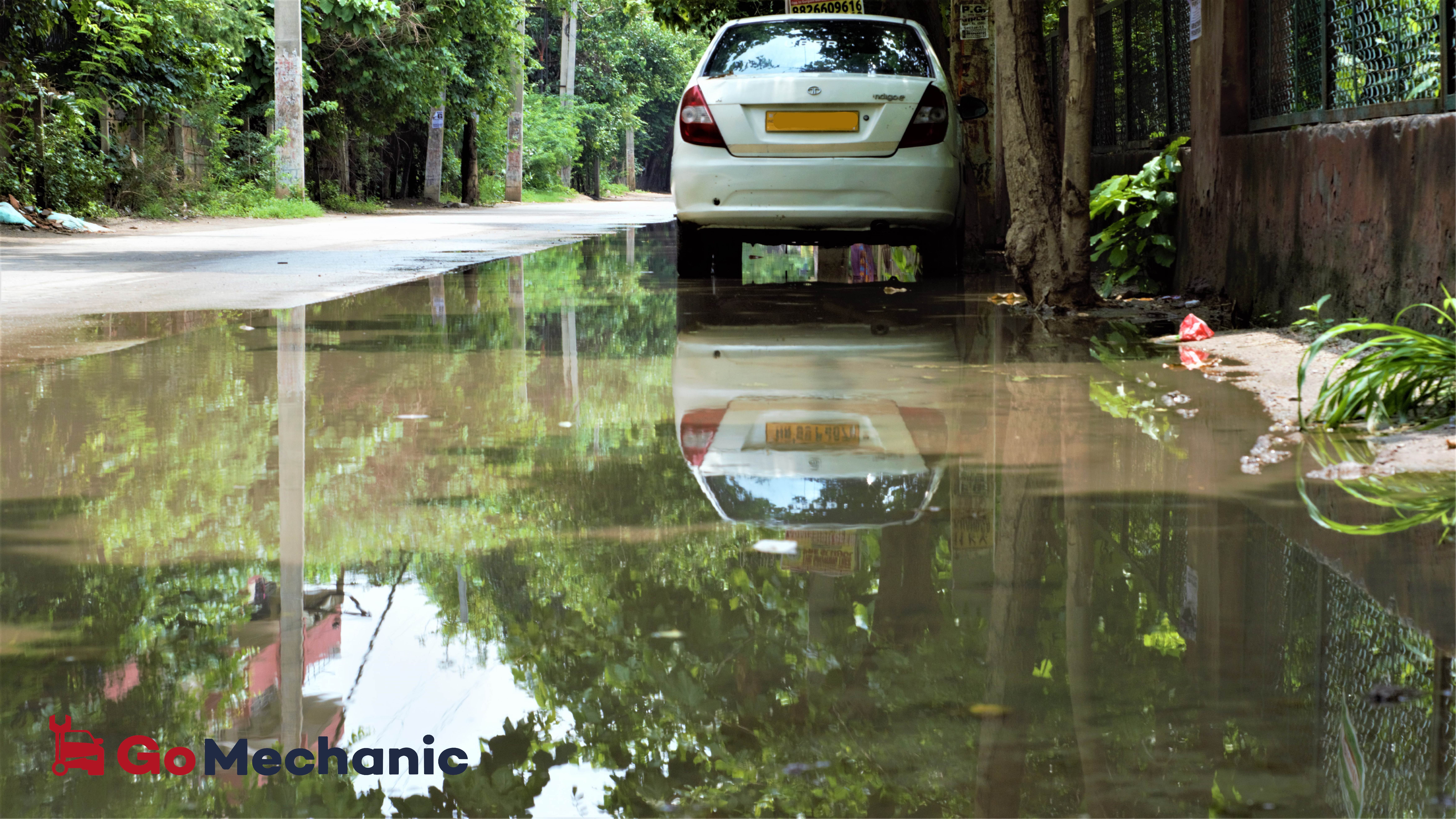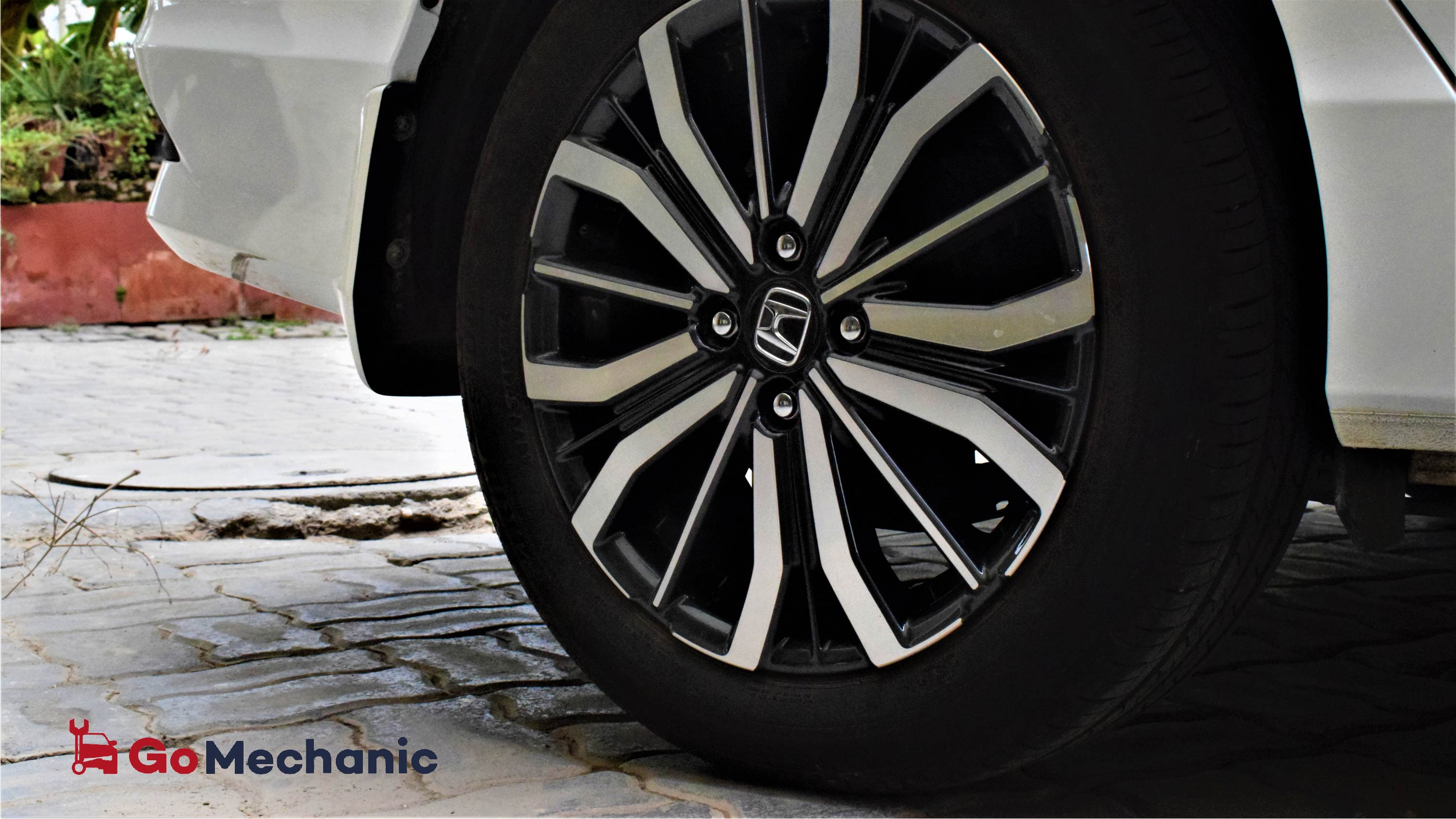Monsoon is brewing, and it’s getting worse day by day. When you have witnessed peak monsoon, you’ve probably noticed the way rain impacts your car. Here in NCR and Mumbai, Car Flooding during monsoons is rampant, in this season we see a sudden surge of car owners visiting our garages with flood-damaged cars. Car flooding can wreak havoc on a vehicle, especially an engine, electrical system, and interior. If your vehicle has been immersed in water more than halfway up its wheels, it has been severely flood-damaged.

Apart from flooding, there are a host of other elements attacking your car, rust, rot mould, mud and muck to name some.
To know how your car can stay fit this monsoon visit our previous post, where we covered 5 Monsoon Tips you need this monsoon.
With the recent floods in cities like Mumbai and several parts of the Delhi NCR bringing the daily life to a screeching halt and causing several crores of rupees in damage, GoMechanic addresses a very crucial situation that is brought along by the intense rains. Car Flooding, which interprets two things, extensive damage and expensive repairs.
So what should you do when your car falls victim to flood damage.
To limit the damage done by rainwater here are some steps you can take so that your car doesn’t suffer much this rainy season.
Do Not Attempt to Start the Car
Abstain yourself from cranking the engine; you have to assume that water has entered your car. We know it gets tempting to see if the vehicle comes back to life but refrain from doing so, especially when it’s muddy. You will be inflicting more damage to the car. Have it towed to a mechanic to have the water cleared and the fluids changed.
Disconnect the Battery
This should be your second move, rainwater can cause immeasurable damage to the electricals, and it is wise to disconnect the battery so that there’s no power to these electrical components. Not only this, there’s a particular risk of electrical shock involved. So if you are in such a scenario, make sure you promptly disconnect the car battery.
Assess the Damage
Third, on the list requires your two prying eyes, get on with assessing the extent of damage to your car. Lift the bonnet to see if the water has entered into the cylinders through the spark plug bore. Pull out the Dipstick and check if you can find any water residue on it. Check the fluid reservoirs, the brakes, the steering and even the wiper fluid. Look for water inside the doors and the taillights, and dampness in the carpets and interior trim. If floodwaters were more than a few feet deep, the rain probably made it to the inside of your car.
Check the Wheels, Brakes and Tyres
This is another essential check where you want to check the wheels, the rotors and the callipers for any lodged debris. When you at it, also check the underbody of the car for the same.

Air Filter Check
Pop the bonnet and have a look at the Air Filter, This will tell you if water is likely in the engine. The air intake is relatively low on a lot of modern cars, and water can easily creep into the air filter and then into the engine. If the filter is wet and there’s water in the air filter, then you have water in the engine. Do not try to tend to the situation yourself, so you may want to leave this part to a mechanic. When you are at it, also check the HVAC filter
Dry Out the Interior
Unfortunately, time is not on your side. Water has crept in and along it has brought mould. Start by opening the doors and windows and putting towels on the floor to soak up water. You should plan on replacing anything that got wet, including carpets, floor mats, door panels, seat padding, and upholstery.
Check the Electricals
When its flood damage, the electricals are the ones which take the maximum brunt. As elementary science has taught us, water and electricity don’t do well. Most of what you can do here is check for placement. If key electrical systems are below the water line, they will likely need to be replaced. 9/10 cases of flood damage we see require a trip to the garage and mandatory electronic replacements.
Lucky you, if the engine is OK to start, check everything remotely electrical, lights, brakes, turn signals, air conditioning, stereo, power locks, windows and seats, even the interior lights.
Call Your Insurance Company
Flood damage is generally covered by comprehensive insurance. You will have to call your insurance to provide to check if you are covered for repairs or replacement. Your car insurance company will probably be flooded (sorry) with claims, so it’s a good idea to start the process early.
Tow it Away
All is not lost, my friend. When every measure fails your fallback should be to call a towing service. Get your car towed to the nearest GoMechanic Workshop where our highly skilled mechanics will take care of the rest.







Good blog. Insurance companies don’t really do anything with a flooded car in India
Glad you liked it.
Agreed!!
[…] Also Read: What to do when your car has flooded? […]
[…] Also Read: What to do when your car has flooded? […]
thanks for sharing useful information on What To Do When Your Car has Flooded |